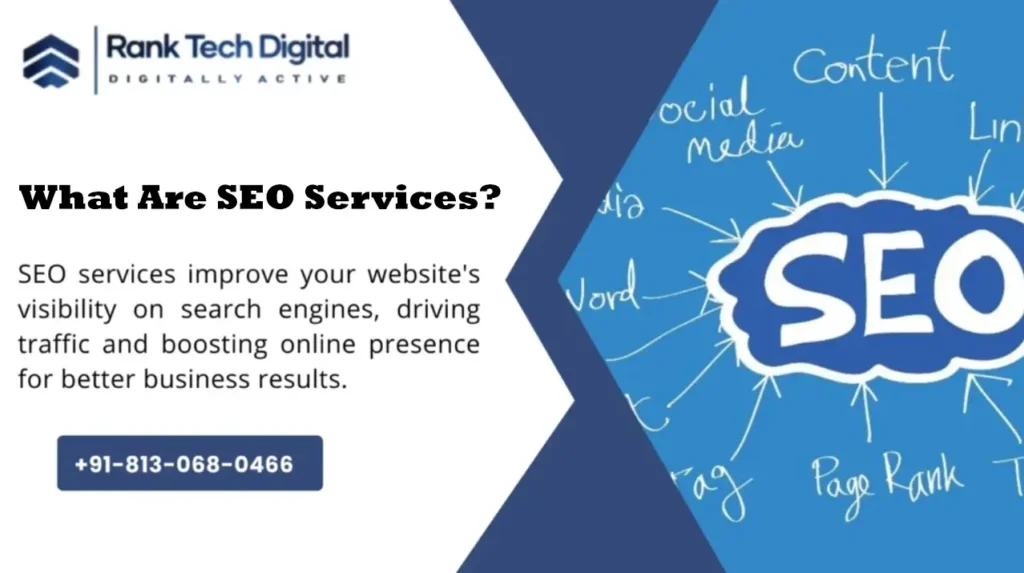With the correct components of creativity, strategy, and technological know-how, SEO is like having a secret recipe that makes your content stand out in the wide digital landscape.
But here’s the best part: SEO content does not need you to give up your distinctive voice or your originality. The goal is to better integrate these components into your writing by learning the criteria search engines use to rank content.
In this blog, we’ll lead you through the fundamentals of SEO content, from keyword research and optimization approaches to designing interesting meta tags, establishing quality backlinks, and much more.
Table of Contents
ToggleWhat is SEO Content?
SEO content is created for increasing a website’s visibility on search engine result pages (SERPs). It helps to drive organic traffic to a website. It is one of the important parts of search engine optimization (SEO). Content optimization help search engine to understand the relevance and value of a website. It helps to gain organic traffic and improved visibility.
It is possible to create blog posts, articles, product descriptions, landing page content, and other sorts of SEO content. It is important to provide informative, instructive content for readers that is also search engine optimized.

The Evolving Landscape of SEO Content
Because of alterations to search engine algorithms, technological developments, and changes in user behavior, the landscape of SEO content has been continually changing. With search engines giving more weight to useful and pertinent information, quality content has emerged as the cornerstone of effective SEO methods.
It has become crucial to comprehend user intent and deliver a fantastic user experience if you want to score well in search results. The necessity for mobile-friendly, voice-optimized content has been prompted by the mobile-first strategy’s influence and the advent of voice search.
For companies with physical locations that want to do well in location-based searches, local SEO has become essential. Keeping up with the most recent trends is important since the SEO environment is always changing. The use of best practices is still essential for establishing long-term success and exposure online.
How to Create SEO Content?
-
Keyword Research:
Start by conducting thorough keyword research to identify the search terms and phrases relevant to your topic or business. Use keyword research tools to find high-volume, low-competition keywords that you can target in your content.
-
Understand User Intent:
Analyze the intent behind the chosen keywords. Determine whether users are looking for information, seeking to make a purchase, or trying to solve a problem. Your content should align with the user’s intent.
-
High-Quality and Valuable Content:
Focus on creating high-quality, valuable content that addresses the needs and interests of your target audience. Provide in-depth information, solutions, and insights that go beyond surface-level content.
-
Optimize On-Page SEO:
Incorporate the chosen keywords naturally into your content, including the title, headings, meta description, and throughout the body. However, avoid keyword stuffing, as it can negatively impact your rankings.
-
Use Engaging Headlines and Meta Descriptions:
Craft compelling headlines and meta descriptions that entice users to click through to your content from search results. A well-written meta description can significantly improve click-through rates.
-
Mobile-Friendly and Responsive Design:
Ensure your content is accessible and displays well on all devices, especially mobile phones, as mobile-friendliness is a crucial factor in SEO.

-
Link Building:
Include internal links within your content to relevant pages on your website. Additionally, seek opportunities for external link building to reputable and authoritative websites to boost your content’s credibility.
-
Optimize for Featured Snippets:
Format your content in a way that addresses common questions or provides clear answers to frequently asked queries. This increases the chances of your content appearing in featured snippets at the top of search results.
-
Multimedia Integration:
Enhance your content with images, videos, infographics, and other multimedia elements. These not only make your content more engaging but can also attract backlinks from other websites.
-
Monitor and Update:
Regularly monitor your content’s performance in search results and user engagement metrics. Update and refresh your content as needed to ensure it stays relevant and up-to-date.
In Conclusion, You can optimize your content to rank better in search engine results. by using the correct strategies and approaches you can attract targeted traffic and achieve your business goals. Remember to perform extensive keyword research, and generate valuable and user-centric content. It is important to optimize the structure of your website and remain updated on the newest SEO trends and algorithm upgrades.
By constantly refining and upgrading your SEO content you can increase your visibility, larger audience reach, and drive meaningful engagement. So, harness the power of SEO content and watch your business skyrocket.







 Gaithersburg MD, USA
Gaithersburg MD, USA